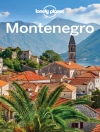The Okanagan attracts thousands of visitors each year to enjoy its beaches and wine, but more and more people are discovering its natural beauty. With desert sands and deep lakes, towering rock cliffs and rich benchlands, cold mountain forests and hot grasslands, the Okanagan has an ecological diversity unequalled in Canada.
Roadside Nature Tours through the Okanagan opens with an introduction to the region’s biodiversity, climate, geology, and human history, setting the stage for the route descriptions that follow.
Richard Cannings then takes us on twenty-one tours through the valley, from the arid benchlands of Osoyoos to the snowy forests east of Vernon. The routes vary from main highways to quiet roads, and along each one we’re introduced to the animals, plants, and bedrock that create this national treasure. Each route also has a focal topic, ranging from owls to salmon and rattlesnakes to rock rabbits.
Table of Content
Introduction
The Natural Okanagan
Climate
Ecosystems
The building of the Okanagan Valley
Human History
Cattle, Cherries and Chardonnay
Routes
Anarchist Mountain
Richter Pass
Mc Kinney Road
White Lake
Black Sage Road
Vaseux Lake
Green Lake Road
Skaha Lake Eastside Road
Apex Mountain
Naramata
Penticton to Peachland
Osprey Lake
Westbank
Westside Road
Glenmore and Beaver Lake Road
Kettle Valley
Vernon Commonage
Silver Star
Mabel Lake
Swan and Otter Lakes
About the author
Richard Cannings works as a consulting biologist in Naramata, British Columbia, assessing endangered species and organizing broad-scale bird population surveys, among many other projects. He teaches field ecology at the University of British Columbia and was curator of the Cowan Vertebrate Museum at the university for fifteen years. He is the author of
An Enchantment of Birds,
The Rockies: A Natural History, and, with Sydney Cannings,
British Columbia: A Natural History and
The B.C. Roadside Naturalist.












